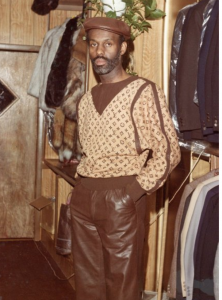Dapper Dan/Daniel Day wearing his own customized clothing
I remember watching the documentary “Fresh Dressed” when it was released in 2015. I was in high school and my fashion design teacher had us watch it in class. I was thinking to myself ” Wow this man is legendary” when I saw what Mr. Dapper Dan had done to the culture of fashion. He basically curated the hip-hop culture and created the image of “dress” in 1980’s. Dapper Dan used silk-screen printing customizing the existant logos of brands as knock ups and making it better. I respect this man for creating a cultural revolution.
I was doing research on the Ottoman Empire and Turkish dress practices throughout history, I came across the Levantine Community that lived in Turkey and practiced their European Latin Catholic roots in their daily lives. It was interesting to find the beginning of western culture to exist in 1930’s Turkey and form itself to the modern day society of Turkey. I have Turkish background in my roots, so I am always curious to learn more about how my culture transformed to where it stands now. When I visited my aunt in Istanbul two years ago, I had the chance to observe the locals and their dress behaviors, the westernized culture vs. the eastern culture have coincided with one another.
Le Smoking YSL 1966
I always loved this photograph of “Le Smoking” for YSL’s campaign that broke ties between androgynous style, masculinity, and femininity. This woman is the modern portrayal of a strong independent woman that symbolized power. She’s in the streets of Paris, casually smoking her cigarette, as she poses in a tailored suit and trousers. This broke all gender, sex roles at that time and is still a symbol of power in contemporary fashion, especially through feminism. I relate to this style and dress of wear and design in this perspective of dress.









































